Do you have a question about the Baker SterilGARD III Advance and is the answer not in the manual?
Lists the key features of the biosafety cabinet's design and construction, meeting NSF 49 standards.
Explains the pressure plenum system and its role in maintaining negative pressure for safety and sealing.
Provides detailed specifications for weight, electrical requirements, power, lighting, and optional features.
Lists the environmental conditions under which the cabinet is designed to operate, including altitude, temperature, and humidity.
Defines symbols and terminology used in the manual for clarity and safety, such as Protective Earth and General Caution.
Inspects the cabinet for damage upon delivery and reports any issues to the carrier for claims.
Provides guidance on selecting the optimal placement for the biosafety cabinet away from air disturbances.
Details the steps for correctly installing the biosafety cabinet according to OSHA regulations and manufacturer instructions.
Provides instructions for connecting the cabinet's exhaust to an external duct system using a Canopy Exhaust Connection (CEC).
Outlines the final steps for connecting the cabinet, plugging it in, and performing initial operational tests.
Identifies and explains the function of the cabinet's control panel elements, including lights, blower, and alarm.
Offers best practices and techniques for effective and safe work within the cabinet, emphasizing aseptic technique.
Provides detailed, step-by-step instructions for performing cabinet decontamination using paraformaldehyde gas.
Explains how to perform and adjust the cabinet's airflow balance for proper operation and contamination control.
Describes procedures for testing HEPA filters for leaks and assessing airflow patterns using smoke tests.
Details the process for safely removing and replacing the cabinet's HEPA filters when loaded or damaged.
Offers solutions to common operational issues and problems encountered with the cabinet, including airflow and electrical faults.
Lists electrical and mechanical replacement parts with their corresponding Baker part numbers for SG403A and SG603A models.
Provides detailed dimensions and electrical schematics for the SG403A and SG603A cabinet models.
Covers stand adjustment, lamp replacement, exhaust system installation, and AFM calibration procedures.
Includes OSHA notices regarding biological hazard signs and the product warranty terms and conditions.
| Class | Class II, Type A2 |
|---|---|
| Airflow (Downflow Air Recirculation) | 70% |
| Filter | HEPA |
| HEPA Filter Efficiency | 99.99% at 0.3 microns |
| Power Supply | 115V, 60Hz |
| Construction Material | Stainless steel |
| Type | Biological Safety Cabinet |
| Airflow (Face Velocity) | 105 FPM (feet per minute) |
| Airflow (Downflow Velocity) | 55 fpm (0.28 m/s) |
| Exhaust | 30% |
| Noise Level | 65 dB |
| Weight | 600 lbs |
| Airflow (Inflow) | 105 FPM (feet per minute) |
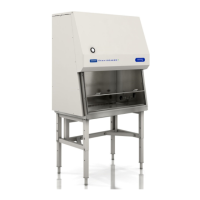
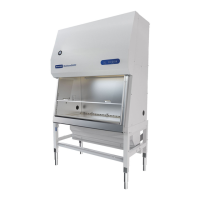
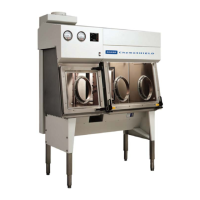
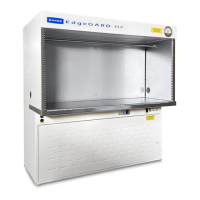
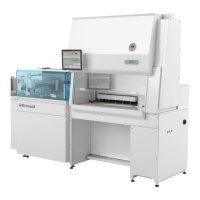
